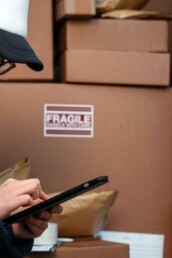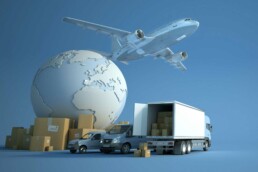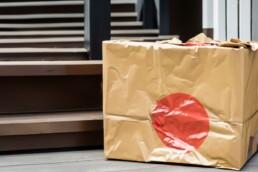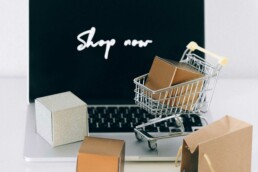6 Ways to Scale Your E-commerce Business
6 Ways to Scale Your E-commerce Business
Starting an e-commerce business is an exciting adventure, especially given the explosive growth of online sales. E-commerce sales surged by 43% during the global pandemic. They continued to rise in 2021 and beyond. Companies that invested in building solid foundations discovered that scaling beyond a lifestyle business required new strategies and processes. Deciding to scale your e-commerce business is a significant step and can prove to be challenging. There are a few key strategies held as industry best practices regarding e-commerce growth. In this article, we will discuss six ways to scale your e-commerce business.
Launch New Marketing Strategies
It is no surprise that if customers cannot find you, they will not buy from you. The online marketing space is cutthroat, no matter what your product or service might be. If you don’t have a substantial marketing budget, you will need to get creative with your marketing plans and strategy. Consider launching new paid campaigns like banner ads, retargeting ads, socials, and PPC (pay-per-click). Take time to review your data and decide on campaigns and ad spending based on actual metrics. Do not guess what you think might work in marketing! Critical metrics you should be tracking include; sales conversion rate, store session by device, store session by traffic source, shopping cart abandonment, returning customer rate, bounce rate, and net promoter score.
Marketing Campaign Ideas

Blog
It might be old news for some, but content still drives organic traffic. It can be difficult for an e-commerce business that is product-focused to write and maintain a blog, but it can pay big dividends long term. Blogs can be a place on your site that share your unique brand story. It is also a place to educate your customers and inform them of changes you make as you grow. For example, if you run a skincare or beauty brand, share tips on how to use your products, what science backs your ingredient choices, and customer success stories as you collect them. No matter what you sell, a blog can be a great way to drive traffic to your site.
Invest in Automation
When you realize it might be time to scale your e-commerce business, one of the best ways is to invest in automation. What exactly should you automate? First, evaluate the areas where you spend the most time or resources managing. Then determine if those aspects could be automated. Maybe you spend hours corresponding to simple customer service requests? Perhaps it is emailing to get feedback reviews, or social media management. Whatever presents the most significant time soak is what should be automated first. One of the most straightforward automation tools to implement is email correspondence. Start there if you are not already auto-mailing order confirmations, tracking, and delivery details.

Outsource Fulfillment
As your order quantities begin to increase you will need to stop self-fulfilling. When you first launched order numbers were manageable, and self-fulfilling was doable. However, order fulfillment is one of the crucial keys in scaling your e-commerce business and one of the most resource heavy tasks too. Scale your e-commerce with a 3PL. Let them take on the job of processing, packaging, and shipping your orders. Even though the initial onboarding and investment might be daunting, it’s an investment that will allow you to scale up exponentially. It frees up time, energy, and resource to focus on your company and your core competencies.
Redesign Website for Mobile Sales
Most people are doing their shopping from their phones. If your site isn’t mobile enabled and optimized for mobile sales you will miss out. Design your site with UX that drives mobile sales. Ensure product images, CTAs, and purchase forms are easily accessible and have the fastest load times you can manage.

Build Excellent Customer Support
Automating via chatbots is one way to help scale your e-commerce business but don’t neglect the human touch either. For common support issues having a 24/7 chat feature is great but for more complex issues people want to talk to a person. Ensure that as your company grows it will be able to handle the increased volume of unique customer needs. Customer service plays a crucial role in customer retention, and the cost to keep a customer is far less than the cost to get a new one! In fact, in the e-commerce realm, retention is 5X cheaper than acquiring a new customer.
Ways Falcon Fulfillment Can Help Scale Your E-commerce Business
Flexibility
Whether you need a lot or a little warehouse space with Falcon you pay for what you need. This allows your profitability to stay high in and out of peak seasons.
Higher Customer Satisfaction
Giving excellent customer experiences at scale is crucial to ongoing growth. At Falcon, we are partners with our clients and we care about your customers almost as much as you do.
Integrated Technology
Your e-commerce doesn’t have to make expensive investments in inventory management software to scale. Our proprietary IMS allows all our clients to see their detailed reports in real-time.
Returns Management
As your e-commerce business grows, so will your returns. It’s simply a matter of numbers. Falcon can help develop and implement a streamlined returns process that keeps customers coming back.
Beginner’s Guide to Third-Party Logistics (3PL)
The world of e-commerce is always changing, therefore understanding the roll of Third-Party Logistics is integral to keeping up. In light of this our beginner’s guide to third-party logistics (3PL) will delve into the essential aspects, offering insights into fulfillment services, warehousing, and much more.
Read More…
As a growing business ourselves, we understand that growing has it’s fair share of pains. Let Falcon Fulfillment offload a few of the pivotal ways to scale your e-commerce business. From order fulfillment to customer service through the last mile, we want to help your business grow.
Interested in learning more about ways we can help you scale? Get in touch with one of our team today.
Let’s Talk!
Ways to Make Your E-commerce Stand Out
Ways To Make Your E-commerce Standout
Online shopping is currently at an all-time high, and as a result, every niche is saturated with e-commerce brands that are nailing the basics. These companies have fulfillment and distribution locked down, and moreover, they know precisely how to meet the needs of even the pickiest customers. In this highly competitive landscape, people want to be able to differentiate between products and brands quickly. Consequently, knowing where to invest valuable time and resources can mean the difference between a converted consumer and an abandoned cart shopper. So, the question remains: What are some of the best ways to make your e-commerce business stand out in such a crowded market?
Narrow and Nail Your USP (Unique Selling Proposition)
E-commerce brands that stand out in the market understand what makes them better than their competition. This is their unique selling proposition. They exhibit this USP every chance they have, from marketing to packaging. Establish a narrow and clear USP, so you don’t fade into the e-commerce ether of the internet. What is it that your business does best?
Updated and Streamlined Website

More than 90% of buyers say they pay more attention to visual appearance over other elements when making a purchase. Furthermore, consumers will leave if your website is outdated or clunky before they even consider purchasing. You cannot afford a website that doesn’t have great UI/UX and funnels customers to a CTA. A few of the most crucial elements of a great e-commerce website are:
- Clear Calls to Action
- Multiple, Large, High-Quality Images on Product Pages
- Lifestyle Versus Product Imagery
- Recommended Related Products
- Customer Reviews and Ratings for Products
- Intuitive and Useful Site Navigation
- Easy Checkout
Adapt and Reinvent
Your products simply cannot go stale. After all, stagnant fashion inevitably ends up in the thrift store, and unsold products collect dust, only to be liquidated or incinerated. Therefore, to stay relevant and competitive, it’s crucial to continually update your offer according to the latest trends, tastes, and even TikToks! In today’s market, your company cannot afford to stay where they’ve always been. Instead, embracing change and adapting to new consumer preferences is essential for long-term success.
Invest In and Cultivate Social Proof

Consumers rely heavily on others to determine whether or not they will purchase a product. In fact, reviews, consumer photos, and feedback provided by real customers significantly help conversion rates. Remarkably, one customer review alone can increase conversion rates by 10%, and multiple reviews can boost them by an impressive 44%. Given these statistics, you simply cannot afford to wait for the 5-star reviews to show up organically. Therefore, to ensure your e-commerce business stands out from the competition, here are a few ways to invest in a robust social proof strategy.
- Showcase Reviews
- Create User-Generated Content
- Collaborate with Local Celebrities, Experts, or Industry Influencers
- Display testimonials on your website
- Encourage mentions and be responsive
- Use Chat Bot Responses to Share Social Proof Content To Answer Questions
Be Active On Social Media
Online shoppers often check out a brand’s social accounts or even get targeted before they make a purchase. One big way to make your e-commerce stand out is to remain active and consistent on social media. It is also one of the best and more affordable ways to engage with your online brand advocates. Here are some posting ideas to kickstart your campaigns.
- Demo and How-To Videos
- Host LIVE events on Instagram or Facebook
- Create Curated Pinterest Boards
- Ask Questions To Your Target Audience
- Give Sneak Peeks Into New Products and Events
- Host Q + A Sessions
- Use Specific Hashtags
- Create Giveaways and Promote User Content
Offer Subscription Boxes and Pairings
Generate consistent month-over-month revenue and wow your customers by offering a subscription box or personalized pairings and add-ons. Here are some keys aspects of creating a successful subscription box.
Solve An Actual Problem For Your Customer Avatar
Regardless of your marketing budget, website design prowess, or social media engagement, one stellar way to make your e-commerce stand out is to solve a problem. This is likely your USP, but sometimes it is a bonus that your product offers. Consider your customer avatar and create a solution for a real-life pain point. This is one of the best ways to make your e-commerce STAND OUT…it’s solid gold!
Unforgettable Customer Service
In a saturated market of bots and automated help articles, having a personal, professional, and polite customer service situation is shocking. While it may not be feasible to hire actual people to respond to every customer request, at minimum, try to ensure a real person solves the most challenging situations. According to Brittany Hodak, the 3 P’s of customer service are professionalism, patience, and a people-first attitude. Having a people-centric customer service model will beat the competition without much effort.
Be Charitable
It’s no surprise that people like to buy stuff from companies that help others. Whether your philanthropic outreach is for children, pups, or people struggling with addiction, adding a charitable cause to your business is a great way to set you apart.
Beginner’s Guide to Third-Party Logistics (3PL)
The world of e-commerce is always changing, therefore understanding the roll of Third-Party Logistics is integral to keeping up. In light of this our beginner’s guide to third-party logistics (3PL) will delve into the essential aspects, offering insights into fulfillment services, warehousing, and much more.
Read More…
If you want to make your e-commerce stand out, it takes work, time, and resources. From redesigning websites to partnering with a local charity, there are many ways to differentiate your business from the crowd. Falcon Fulfillment ensures your product arrives but can also expand your network through a 3PL partnership. We can handle the nitty-gritty stuff so you can focus on building the best stand-out e-commerce brand out there.
Get in touch with one of our agents today to see how we can help.
Let’s Talk!
6 Indicators You Should Stop Dropshipping
6 Indicators You Should Stop Dropshipping
Dropshipping is a great way to start an e-commerce. It is a direct partnership between suppliers and manufacturers to accept orders for their goods or products. The startup costs are minimal, and it is an easy way to test products in a new market. However, there are several drawbacks to dropshipping and some significant limitations. Here are six indicators to stop dropshipping and consider fulfillment alternatives.
Product Delivery Times Don’t Meet Customer Demand

Suppliers and manufacturers are not agile in servicing and fulfilling individual orders. Their primary focus is producing and fulfilling large wholesale purchases. The bulk of their profit is made through large-scale orders. Dropshipping and any DTC sales will always be secondary. Therefore, you can expect far longer delivery timelines using dropshipping than meets consumer demand. According to Medium.com, the average dropshipping delivery time is 12-60 days.
Lower Margins
Dropshipping is essentially marketing and selling for the manufacturer. As the e-commerce owner, you can expect lower margins. Without the benefit of negotiating a larger volume order price, each sale you make will be slightly less than if you fulfilled in-house or through a 3PL. It is crucial to evaluate the entire cost of dropshipping. Even though you may save initially, it could cost you more than you think.
You Need to Scale

The e-commerce brands that thrive have a proven customer service track record. When something goes wrong with an order, the customer will call you, not the manufacturer. Therefore, you need to have the ability to problem solve quickly. This is easier if your supplier is domestic but becomes exponentially more complicated with an international provider. From language barriers to time zone differences, getting an answer could take several days vs. hours. Even if your supplier is located in the US, communications can fail. If you have experienced this frustration, it might indicate that you should stop dropshipping.
Inventory Control is Out of Control
When you dropship, you have a 0% say in how much inventory the supplier creates. Furthermore, you are stuck when a more prominent company places a larger order and buys out all YOUR stock. Your business and revenue are at the mercy of your manufacturer. At any moment, the supplier could decide to discontinue producing your product. One way to avoid this is by diversifying your manufacturing and sourcing multiple locations that can fulfill your orders. Quality control gets tricky, but you would be far less likely to have a complete inventory blackout.
Quality Control is Unknown
Unless you receive product orders regularly, you have very little assurance in what ends up in the shipped box. The unboxing experience for your customer is out of your hands. Damages and returns are more common with dropshipping, which means that your customer service teams might be busier than if you chose a fulfillment alternative.
Communication Failures
Does this sound familiar? Your sales are up, and your market test confirms there is still room for growth. However, you are concerned if you run a campaign to boost sales, fulfillment would falter. Your business is probably feeling restrained, indicating that you should stop dropshipping. When you have been accepting lower margins, but the numbers show you could maximize earnings by buying wholesale, managing inventory, and fulfilling, it might be time to switch.
Fulfillment Alternatives for Dropshippers
Check out our post on the differences in “Logistics Providers Explained: 1PL, 2PL, 3PL, 4PL, and 5PL.” There are many fulfillment alternatives, but we have found the sweet spot for e-commerce businesses seeing indicators to stop dropshipping benefit considerably from a 3PL relationship. Here’s why:

Beginner’s Guide to Third-Party Logistics (3PL)
The world of e-commerce is always changing, therefore understanding the roll of Third-Party Logistics is integral to keeping up. In light of this our beginner’s guide to third-party logistics (3PL) will delve into the essential aspects, offering insights into fulfillment services, warehousing, and much more.
Read More…
Working with a 3PL can help to ensure faster delivery times, accurate tracking for those deliveries, and even manage returns when something goes wrong. Furthermore, you will have more inventory control when working with a 3PL. Falcon Fulfillment can offer flexible inventory storage based on demand, seasons, and space. This gives you more control in ensuring adequate product levels and minimizing backstock.
If you are witnessing any indicators that you should stop dropshipping, chat with us to see if we can help. Get in touch today.
Let’s Talk!
Choosing a 3PL Partner - 11 Factors to Consider
Choosing a 3PL Partner – Factors to Consider
For e-commerce business owners, fulfilling orders in-house might be feasible for a short time. As sales increase and warehouse space become sparse, it might be time to outsource fulfillment. Choosing the right 3PL partner for your fulfillment needs can help your business become more strategic, increase customer satisfaction, and scale. Here’s what you need to understand about choosing a 3PL partner and factors to consider.
Questions to Ask and Answer Before Choosing a 3PL Partner

- What are your company’s shipping and packaging priorities?
- What are your company’s marketing priorities?
- How will these priorities change over the next 3-5 years?
- What is the projected growth you expect over the next year or two?
- What qualities do you expect your 3PL partner to have?
- What services do you want your fulfillment partner to offer?
- Is sustainability important?
- How communicative do you want your 3PL partner to be in the relationship?
- Do you want your fulfillment team to handle returns and restocking?
- Where are the majority of your customers? Countries, regions, towns, etc.
- Is offering free shipping to your customers a priority?
11 Factors to Consider When Choosing a 3PL Partner
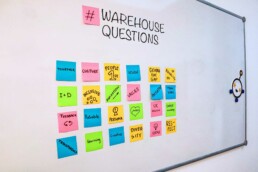
Capability
Almost every 3PL company will provide an expanded network of transportation carriers, warehousing, and expertise in the logistics industry. These are the foundational requirements. Therefore to understand which 3PL partner will work best with your company, you need to understand what other services they provide. For example, can they help you with kitting, pick and pack, and returns management? Selecting a 3PL provider that can offer various services will help you offload more logistics management as you grow.
Stability
Don’t go with a newbie. Fulfillment companies popped up like dandelions during the COVID-19 pandemic and have subsequently withered just as fast. Choose a 3PL partner with an established track record for superior service and exceeding industry service standards. The supply chain continues to fluctuate rapidly. Selecting an experienced and stable 3PL partner can help you preempt shifts in the supply to ensure minimal disruptions to your business operations and inventory.
Reputation & Reviews
3PL partners that go above and beyond to care for their customers, carriers, staff, and vendors will have a solid reputation in the industry. Fulfillment companies leverage their relationships in transportation, manufacturing, and marketing to help their clients. Trust reviews from multiple sources to determine what you can expect working with them.
Safety & Security
Amazon lawsuits are multiplying daily from accounts of negligence and safety concerns. While no warehouse is perfect, it’s vital to ensure your 3PL partner is demonstrating a high level of safety for staff and products. Look for providers that have PCI certification and a HAZMAT shipping certification. Furthermore, they should safeguard financial information.
Customer Service
Excellent customer service is a vital part of running a successful business. When customers have a good experience with your company, they share it with others. 3PL companies that exhibit excellent customer service respond quickly to requests, provide clear and helpful communication, are adequately trained, speak with customers directly, and are present in the warehouse. When choosing a 3PL partner, evaluating their customer service offering and quality is crucial.
Scalability
One of the benefits of partnering with a 3PL is the ability to scale your business. The partnership allows you immediate access to flexible storage space, expertly trained fulfillment staff, and a broad network of transportation carriers. Most 3PL companies offer some level of scalability for your business. However, not all 3PLs are created equal. You don’t want to discover after you have onboarded that your plans to 10x are impossible. Ensure your fulfillment partner can provide storage, shipping, and fulfillment solutions for your business today and in the future.
Accuracy
Inaccurate data, inventory, or tracking details can affect your bottom line and customer satisfaction. A solid 3PL partner will have a 99% or higher accuracy rate. This is the industry standard, so anything below that is a red flag. Most 3PL companies utilize high-tech inventory management systems and real-time tracking and delivery programs. This reduces human error and increases insight.
Responsiveness
One of the main complaints of customers about 3PL partners is the need for more responsiveness. In general many fulfillment companies don’t have the human resources to provide a dedicated account manager. They correspond with customers “when they can.” With Falcon Fulfillment, you always have a dedicated account manager. This has enabled our customers to get the answers they need to make crucial business decisions and keep their clients happy. Ensure you are satisfied with the level and consistency of communication your 3PL offers.
Omnichannel Expertise
Retailers who desire to meet and exceed customer expectations strategically offer an omnichannel experience. Find a 3PL provider that has expertise in streamlining sales, inventory management, and fulfillment across all platforms. They can make recommendations to expand your sales funnel without jeopardizing brand continuity or diminishing customer service.
Multi-site Distribution
Unless you sell to customers in a single location, having a 3PL partner with multi-site distribution centers is a significant benefit. This significantly allows you to offer your customers lower shipping costs and faster delivery. Multi-site distribution is essential when competing with the “Prime Effect,” of lightning-fast fulfillment.
Compatible Technology
Every 3PL partner will have slightly different integrations that are turnkey. Select a fulfillment company that already has compatibility with your systems or is willing to customize integrations. Disjointed systems are one of the significant causes of frustration and miscommunications in logistics and shipping so discuss this issue early in conversations. Here is a short list of the integrations Falcon currently offers:
- Shopify
- ShipStation
- WooCommerce
- Infusionsoft
- ClickBank
- OrderBot
- Click Funnels
- Zapier
In addition, our Shipstation partnership allows us to integrate with more e-commerce shopping carts like:
- Amazon UK, Canada, Mexico, USA
- UltraCart
- eBay
- Walmart
- and more
Lastly, Falcon Fulfillment offers our API, allowing seamless custom integrations.
Beginner’s Guide to Third-Party Logistics (3PL)
The world of e-commerce is always changing, therefore understanding the roll of Third-Party Logistics is integral to keeping up. In light of this our beginner’s guide to third-party logistics (3PL) will delve into the essential aspects, offering insights into fulfillment services, warehousing, and much more.
Read More…
Selecting a 3PL partner doesn’t have to be challenging, but it does require strategy and intentional investigation. When choosing a 3PL partner, consider these factors to ensure a good fit. In short, remember that your fulfillment team is an extension of your business and should exhibit similar cultures, values, and quality. Cost is a driving factor, but it shouldn’t be the only factor.
If you want to learn more about the Falcon Difference, contact one of our specialists today.
Let’s Talk!
3 Types of Logistics - Inbound, Outbound, and Reverse
3 Types of Logistics – Inbound, Outbound, and Reverse
Logistics is an important part of any business. It ensures that businesses deliver products and services on time and in a cost-effective manner. Simply put, logistics includes three main categories: inbound, outbound, and reverse logistics. Each of these categories has characteristics and processes, and businesses must understand them to operate successfully.
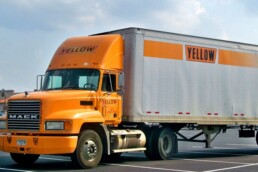
Inbound Logistics
Inbound logistics is the process of receiving and storing goods from suppliers and vendors. It involves managing the flow of materials from the point of origin to the point of use. It includes transportation, inventory management, warehousing, and order fulfillment. Here is a brief overview of aspects commonly considered inbound logistics activities:
- Sourcing and Procurement – Sourcing takes care of everything from finding suppliers, vetting & contracting them, and maintaining a healthy variety of vendors to cater to the organizational needs. Procurement involves procuring goods and services needed for the organization. See the differences between sourcing and procurement below:
- Ordering and Purchasing – Ordering and purchasing involves buying the correct quantity of goods in time for crucial business operations and sales
- Transportation – Selecting the transport method, speed, and carrier to move goods from vendors to their intended destination.
- Receiving – This process involves handling materials and goods as they arrive, including unloading and ensuring quality and quantity match the order.
- Storing – Once the goods are verified, they must be organized and stored. Typically this involves warehousing of some kind.
- Inventory Management – Another crucial aspect of the inbound logistics process is managing inventory, including adding raw materials, components, and ready-to-sell products to the inventory management system (IMS).
- Reverse Logistics – while this is its own type of logistics, it is also considered an inbound logistics activity because goods are added back into the supply chain. More on this later in the post
Inbound logistics is essential for businesses as it ensures that the right products are delivered to the right place at the right time. Furthermore, it supplies the company with the raw materials, goods, and services required to fulfill customer orders.

Outbound Logistics
Outbound logistics is the process of transporting and delivering goods to customers. It is the opposite of inbound logistics and involves activities such as order processing, picking, packing, and shipping. Outbound logistics focuses on the demand side of the supply-and-demand equation. In brief, some of the most vital outbound logistics processes include:
- Warehousing and Storage – Similar to inbound logistics, warehousing, and storage planning and design are necessary to fulfill orders quickly and accurately
- Picking and Packaging – As customer orders are received, the items are selected, packaged, and prepped for shipping.
- Outbound Transportation – This is the process whereby orders are delivered to the end user. Multiple aspects are in this category, including distribution channels, route optimization, and last-mile delivery.
Without a doubt, outbound logistics is essential for businesses as it ensures customers receive their orders on time and in perfect condition.
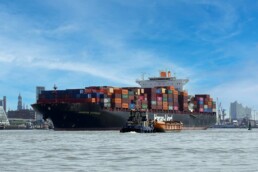
Reverse Logistics
Reverse logistics is essential for businesses to reduce costs associated with returns and allow companies to create a better customer experience. It involves every aspect of returning goods from customers to the business including; product inspection, repair, and replacement. With more than 20% of online purchases ending in a return or exchange, this type of logistic planning cannot be an afterthought. Companies that prioritize easy return policies and a fluid process for customers are earning trust and loyalty. What’s more, partnering with a 3PL provider that offers reverse logistics as a service is a great way to include this service without the headache of managing all the moving parts.
Beginner’s Guide to Third-Party Logistics (3PL)
The world of e-commerce is always changing, therefore understanding the roll of Third-Party Logistics is integral to keeping up. In light of this our beginner’s guide to third-party logistics (3PL) will delve into the essential aspects, offering insights into fulfillment services, warehousing, and much more.
Read More…
How a 3PL assists with the 3 types of logistics
A 3PL (Third-Party Logistics) provider helps companies manage their inbound, outbound, and reverse logistics operations. For inbound logistics, a 3PL can coordinate the transportation of goods from suppliers, manufacturers, and vendors to warehouses and distribution centers. For outbound logistics, a 3PL transports goods from warehouses to customers. Simply put, they receive products and components, store them, and ship them to the end customer. For reverse logistics, quality 3PL partners manage the return of goods from customers to suppliers or warehouses. In addition, a 3PL can help a company manage inventory levels and provide tracking and reporting services. Therefore, by leveraging their expertise, companies can streamline their supply chain operations, reduce costs, and improve customer service.
Overall, inbound, outbound, and reverse logistics are 3 types of logistics processes. These processes ensure products and services are delivered on time, cost-effective, and customer satisfaction. Businesses must understand and manage these processes to be successful. Talk to a friendly agent today to see how Falcon Fulfillment can assist with your logistics needs.
If you’re ready to start the transition or have questions, contact us to learn more about our services.
Let’s Talk!
6 Common and Costly Shipping Mistakes
Common and Costly Shipping Mistakes
Shipping products is a necessary component of running a business. According to a new report from Pitney Bowes, parcel shipping exceeds 131 billion in volume globally and is likely to double by 2026. Companies must correctly manage shipping and delivery expenses to prevent negative effects like slowed productivity, dissatisfied consumers, and burgeoning shipping budgets. Unfortunately, these six common and costly shipping mistakes affect even the most diligent organizations. The good news is that all of them can be limited with a few simple changes.
Invoice Errors

Invoice errors or miscalculations are more common than you might expect. Nearly 2% of all shipping invoices contain errors. The most common inaccuracies include:
- Fuel and Shipping Miscalculations – Fuel prices fluctuate, so it’s no surprise that miscalculations happen regularly. Make sure shipping contracts clearly state acceptable margins of error on fuel charges. In addition, shipping miscalculations are related to inaccurate weights and dimensions of packages.
- Accessory Charges – relate to special instructions or tools required for delivery. For example, charges can be added to access a gated community or deliver a heavy load up or down stairs. Another common accessory charge is for unique tool usage, like lift gates, forklifts, etc. These charges are hard to know whether they are legitimate. Ensure you trust your carrier and have the relationship to question when something seems out of the ordinary.
- Detention – occurs when your shipment isn’t ready for pickup during the allotted time. Often these terms are set beforehand, but you can be overcharged for the time the carrier waits.
The best way to avoid common shipping mistakes is to audit invoices. Whether you take the time to review them or invest in automated invoice technology, it is crucial to double-check for accuracy. Given the numbers, you could save your company 2% on shipping costs annually.
Incorrect Measurements and Dimensions
Incorrectly measuring or weighing parcels is probably one of the easiest shipping mistakes, yet it is one of the most costly. Shipping charges are calculated based on actual dimensions, density, weights, and volumes of parcels. If an estimate is off by even a few ounces, it can result in thousands of dollars of surcharges, especially when shipping more than a few daily orders.
Depending on the carrier, they could even return the package to the warehouse and make you pay for redelivery at the correct amount! This delays the package, costs your company double the shipping, and doesn’t provide your customer with a good experience.
Ensure your packages have precise dimensions and weights, using a tape measure and calibrated scale. It is a simple step that busy entrepreneurs often miss.
Improper Packaging
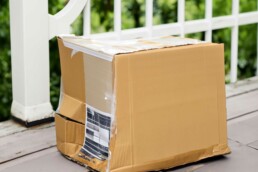
Packaging your products in a box that is either too big or too small can cost you money. Improperly packaged products are prone to damage and breakage. Furthermore, you could be overpaying for shipping using an oversized box (albeit standardized). Here are four ways right-size packaging can boost profitability. Packages that are delivered that have sustained shipping damage also do not showcase your brand well. Utilizing packaging and materials that protect your product and showcase your brand saves you money long-term.
Offering Free Shipping When You Cannot Afford It
A common and costly shipping mistake is offering free shipping when it doesn’t make financial sense. Of course, customers want free shipping but do not offer it if it will place your business in a financial bind. A quick evaluation of your accounting records will tell you whether or not it is viable. Here are a few “free-shipping” options that might still allow you to offer it as a special event without breaking the bank.
No Shipping Insurance
This is an easy mistake, especially when you want to cut corners. Unfortunately, the sender covers any shipping damages or losses. This is why it is crucial to insure your products. Regardless of shipping insurance, you can recoup losses and damages when the unexpected occurs.
Incorrect or Incomplete Delivery Details

A silly but common and costly shipping mistake is inaccurate or incomplete delivery details. From incorrect addresses to vague delivery details like the floor or suite number can cause delivery delays, returns and cost you money. Double check address details and ensure if there are special delivery instructions that either the customer covers the expense or verify you can absorb the cost. Invest in online address verification technology. When a customer inputs their address it will confirm the details by cross-referencing them against known addresses. If there is a mistake, it can autocorrect at the input point.
Beginner’s Guide to Third-Party Logistics (3PL)
The world of e-commerce is always changing, therefore understanding the roll of Third-Party Logistics is integral to keeping up. In light of this our beginner’s guide to third-party logistics (3PL) will delve into the essential aspects, offering insights into fulfillment services, warehousing, and much more.
Read More…
With shipping costs rising, it is vital to ensure you are saving as much as possible by avoiding these common and costly shipping mistakes. By steering clear of a few of these mistakes, your company can see a little boost to your bottom line. By double-checking the accuracy of invoices, addresses, dimensions, and weights, your company can save a lot of lost revenue. Even though package damages cannot be avoided altogether, using the right-size packaging limits damage and ensures you are only paying for the shipping, you need.
Falcon Fulfillment can help you reduce shipping costs, improve shipping invoice transparency, and provide the right-size packaging. Learn more and get in touch with one of our agents today.
Let’s Talk!
Shipping 101: The Basics of Standard Shipping
The Basics of Standard Shipping
As an e-commerce retailer, you are undoubtedly aware of the importance of offering reliable delivery options to your customers. Consequently, shoppers anticipate a range of delivery choices at the checkout stage. While shipping is a fundamental necessity, it can often feel daunting. Nevertheless, one of the most widely preferred and dependable options is standard shipping. In this article, we will delve into the fundamentals of standard shipping, including delivery times, cost considerations, and strategies for enhancing your overall shipping experience.
What is Standard Shipping?

Standard shipping, also known as regular shipping, is generally regarded as the most economical option for parcel delivery. Referred to as ground, economy, or regular shipping, it represents the baseline level of shipping typically presented at checkout. Not including expedited options like overnight or 2-day delivery, standard shipping is considered the basic, expected delivery method in e-commerce. While it may not be swift, standard shipping reliably fulfills the task at hand.
How long does standard shipping take?
Several factors contribute to how long a package will take to deliver using standard shipping.
- Distance the shipment travels
- Processing time cut-offs
- Standard shipping timeline for the individual carrier
The typical timeframe for a package delivered via standard or ground is 1-5 business days within the continental United States. Conversely, a Hawaiian customer ordering a product from Maine will experience a longer delivery timeline.
What factors contribute to shipping costs?
Similar to determining the time a package takes to be delivered, many factors contribute to the cost. The distance from the warehouse or store to the final destination will be a significant cost factor. Typically, prices are relatively stable within the continental US. Those costs will be slightly higher if you add Puerto Rico, Hawaii, and Alaska. International is an entirely different beast. Other factors that significantly impact the price are the package dimensions and weight. Most major parcel carriers now offer standard-size boxes and maximum weights for a flat rate. This is useful for smaller e-commerce businesses that don’t care about a branded unboxing experience. The carrier will also make a difference in the cost of standard shipping. The graph below compares standard shipping for the largest parcel delivery companies in the continental US.
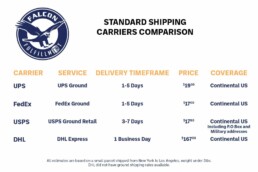
Ways to improve the standard shipping experience.
According to a study done by Accenture, effective and dependable delivery options are a priority for e-commerce brands to remain competitive. Brands that want to maintain and grow their market share will not only need to provide reliable shipping but will also need to diversify their offerings. A few ways to improve the standard shipping experience include:
Proactive delivery communication.
Giving consumers a delivery window is no longer enough to satisfy customer expectations. They want consistent post-purchase communications to plan and prepare to receive their order. This includes tracking information, delay updates when necessary, and even notifying the consumers when a package is out for delivery. Suppose your parcel delivery company can provide consumers with a preferred delivery window that can be game-changing. This is especially true for large parcel deliveries and those requiring an adult signature. This level of proactive communication improves the standard shipping experience greatly.
Upgrades and delivery alternatives
66% of consumers choose retailers based on the number of delivery options available at checkout. Offering 2-day shipping, expedited, or delivery alternatives must be available to stay competitive. Alternative options to standard shipping that won’t dramatically raise the shipping costs include; BOPIS (Buy Online Pickup In-Store), Curbside, and local delivery or locker systems. If you run a brick-and-mortar store, these alternatives can improve customer satisfaction without negatively affecting the bottom line.
Beginner’s Guide to Third-Party Logistics (3PL)
The world of e-commerce is always changing, therefore understanding the roll of Third-Party Logistics is integral to keeping up. In light of this our beginner’s guide to third-party logistics (3PL) will delve into the essential aspects, offering insights into fulfillment services, warehousing, and much more.
Read More…
Managing the logistics of shipping can become overwhelming quickly. Typically, e-commerce brands use at least three parcel carriers to mitigate the risk of lost packages and delays stemming from single carrier usage. Partnering with a 3PL is an excellent way to scale your standard shipping options. 3PL partners, like Falcon Fulfillment, are experts in fulfillment, delivery, and shipping best practices. They can help your e-commerce brand not just get a package delivered but ensure your growing consumer expectations are not just met but exceeded.
Want to go beyond the basics of standard shipping? Get in touch with one of our specialists today.
Let’s Talk!
How To Offer 2-Day Shipping As An E-commerce Startup
How to offer 2-day shipping as an e-commerce startup.
As an e-commerce startup, offering two-day shipping can be a great way to give customers the convenience that they desire and set yourself apart from the competition. That said, offering two-day shipping can take a lot of work. It is important to understand the value of offering 2-day shipping and what is necessary to provide it without sacrificing profitability. This post will discuss the ins and outs of 2-day shipping and how you can offer it even if you are an e-commerce startup.
Benefits of offering 2-day shipping
Improved customer satisfaction
It’s no secret that when people order a product, they want it as soon as possible. The sooner they receive their items, the more likely they will have a positive brand experience. With 60% of consumers expecting expedited shipping options, it is crucial to have favorable customer reviews and recommendations.

Increased sales conversions
Companies that offer expedited shipping, especially at an affordable rate, are far more likely to convert browsing consumers into paying ones. While shopping cart abandonment is a serious issue, it can be minimized by offering faster delivery options at a reasonable price.
Improved customer loyalty
When a consumer receives their package promptly, it builds trust and loyalty in the brand. Customers are far more likely to buy again if they have a positive delivery experience.
According to Lasership, slow delivery caused 64% of consumers to try a new retailer and 54% to switch retailers. Therefore, planning to offer 2-day, expedited shipping is vital. How can you provide 2-day shipping?
How to offer 2-day shipping tips
Distributed inventory
Utilizing multiple fulfillment centers or warehouses can provide faster and cheaper shipping to customers. Most 3PL partners can distribute inventory across their centers, which means it is a great way to distribute inventory without securing private warehousing spaces in multiple locations.
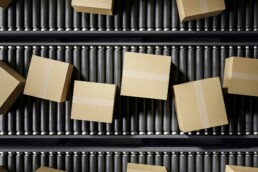
Improve processing speeds
One of the first things that must be considered is how long it takes for an order to be received, packed, labeled, and shipped. If you fulfill in-house, this task can consume significant time and resources. In order to meet 2-day shipping cutoffs, it is vital to process orders within hours of receiving them. This gives the carriers the most time possible to execute final-mile delivery within the 2-day window.
Investing in team training, automation, high-tech inventory software that improves picking accuracy, and ensuring a clean and well-designed warehouse can improve streamlining order processing. If this seems like a hefty investment of time and money, it is. However, partnering with a quality 3PL partner can give you access to a fully optimized order processing workflow with a smaller upfront investment.
Utilize multiple expedited shipping carriers
To secure expedited shipping without breaking the bank, it is imperative to partner with multiple shipping carriers offering faster delivery speeds. Of course, the faster a package arrives often means, the more expensive the shipping fees will be. As your business grows, you can leverage bulk discounts which help alleviate the higher costs. As an eCommerce startup, it might be challenging to meet those quantities. However, partnering with a 3PL fulfillment team can allow your business to ship less and benefit from the discounts afforded to the 3PL. Furthermore, 3PL companies have relationships with most major carriers and utilize automation software to select the most affordable fast shipping available.
Set minimum order value for 2-day shipping
Another way to offset expedited shipping costs is to set minimum spending thresholds. More than 50% of shoppers will add extra products to be eligible for fast and free shipping. Use this to your advantage to increase your AOV (average order value) to help cover the cost of fast or free delivery.

Incentivize membership or subscription models
Improve customer loyalty by incentivizing membership or subscription models where customers qualify for 2-day shipping. Whether the customers must subscribe to monthly purchases or pay a membership fee, this is another way to help offset the cost of your eCommerce startup.
Offering 2-day shipping as an e-commerce startup may be overwhelming, but it is entirely possible. Offering 2-day shipping is a great way to increase customer satisfaction and loyalty. It makes the shopping experience more convenient and enjoyable for customers, leading to higher customer satisfaction and more repeat customers. One of the best ways to offer 2-day shipping consistently is by partnering with a reliable 3PL. Falcon Fulfillment provides 2-day shipping for 96.4% of the 48 continental states and can offer distributed inventory, streamlined order processing, and discounted courier rates.
Talk to one of our agents today to learn how we can help your e-commerce startup offer 2-day shipping.
Let’s Talk!
5 Essential E-commerce Website Features
5 Essential E-commerce Website Features
Whether you are a well-established brand or just getting started, a well-designed and executed website is essential to success. A recent forecast by statista.com reveals that e-commerce is expected to grow by over 50 percent during the next four years. E-commerce revenues could reach an incredible 7.4 trillion dollars by 2025. To capitalize on the growing market, e-commerce websites and features must cater to new consumer tastes.
Your website is your storefront. From the homepage to the product pages, each segment has specific elements that cannot go ignored if you want to minimize cart abandonment and increase sales. This article will share 5 essential e-commerce website features that contribute to conversion and customer satisfaction.
Must-Have E-commerce Website Features
Responsive Design

Now more than ever, consumers are using multiple devices to scroll, shop, and learn. Screen sizes vary from a watch to a 65” monitor. Furthermore, purchases from mobile devices are on the rise. Retail mCommerce sales (mobile purchases) hit $359 billion in 2021, a 15% increase over 2020.
Your e-commerce brand cannot afford to lose market share because your design isn’t optimized for mobile. Investing in responsive design will make your site mobile-friendly, improve the aesthetic of all screen sizes, and increase the time visitors spend on your site. Nixon.com has an excellent responsive design and great design overall. They cater to a youth lifestyle and have invested in ensuring their buying experience is easy across all devices.
User-Friendly Navigation

There is nothing worse than having to search for what you are looking for and being unable to find the navigation menu. The navigation is like the foundation of your website. It is where every user will go to locate what they are looking for. Make sure the navigation is prominently placed and easy to use. Eye-tracking research shows people spend 80% of their viewing time on the left portion of your website and only about 20% on the right. Consider using secondary navigation on the left side.
An excellent example of solid navigation design is Rothys.com. They have anchored their navigation in the left quadrant with a responsive and extensive dropdown navigation menu for their unique sales verticals. User-friendly navigation enables your consumer to find what they are looking for quickly and effortlessly if a customer has to look too hard for something, they will simply find what they need from a competitor.
Easy and Generous Return Policy

A return policy is often an afterthought for most e-commerce owners, but it can be an effective marketing tool. With more customers shopping online, the details, clarity, and ease of making a return can make the difference between a “sale” and a “save for later.” Ensure your return policy is easy to find and prominently displayed at the point of sale. Use easy-to-understand language. Lastly, make it as simple as possible for a customer to make a return. The more flexibility they have to change their mind, the more likely they will make the purchase.
In fact, 92% of consumers will buy again if the return policy is easy. A great example of a generous return policy is from Zappos.com. They are so confident in their return policy they have placed it in their top header!
Multiple Payment Options

Consumers want to be able to pay with whatever platform, card, or app is most convenient for them. Credit and debit card options are standard. In order to improve conversion and attract a broader audience it is important to offer multiple payment options. Payment options that are gaining traction include; Apple Pay, Google Pay, PayPal, Amazon Pay, Boleto, Stripe, Venmo, Square, and E-wallet. With so many ways to pay it can be hard to narrow which will cater to your specific audience. The essential e-commerce website feature to have is more than one way to pay at checkout. This gives consumers flexibility to give you their money easily. After all, you don’t want to prevent a purchase simply because you didn’t offer a payment gateway that was easy for them.
Omnichannel Platform
Omnichannel is the new buzzword in the world of e-commerce for good reason. An omnichannel platform, simply stated, is where a consumer has a seamless shopping experience across every location and channel that offers your product.
This means that the website, social channels, third-party retailers, and the brick-and-mortar stores create a singular brand experience. Omnichannel development requires unification across point of sales systems, inventory tracking systems, marketing efforts, and UI/UX design. A daunting task, especially if your sales efforts have become fragmented. It is worth the time and energy to refocus your brand and your technology integrations though. Expect to see more omnichannel fulfillment and growth in the future.
Beginner’s Guide to Third-Party Logistics (3PL)
The world of e-commerce is always changing, therefore understanding the roll of Third-Party Logistics is integral to keeping up. In light of this our beginner’s guide to third-party logistics (3PL) will delve into the essential aspects, offering insights into fulfillment services, warehousing, and much more.
Read More…
Designing and developing your website to convert as many consumers as possible is a massive undertaking. At Falcon Fulfillment we cannot help you implement the 5 essential e-commerce website elements, but we can give you more time. We alleviate the fulfillment headaches and allow you to focus on your core competencies. From receiving to final mile delivery, we ensure your product gets into the hands of your customers.
We can even manage customer service and returns! Get in touch today to gain back some time to focus on your e-commerce future.
Let’s Talk!
Kitting and Assembly
Kitting and Assembly – What It Is And Why You Need It.
Firstly, companies utilize kitting and assembly services to streamline order fulfillment and expedite product delivery. Specifically, kitting is the process of arranging separate items into a “kit.” In other words, kitting involves packaging and shipping products that require a particular order and arrangement. For instance, a good example of items or products that benefit from kitting is subscription boxes and furniture that requires assembly. On the other hand, assembly arranges the individual components in the packing box that make up the kit. Therefore, any company that sells ready-to-assemble products, subscription boxes, or bundled items can undoubtedly benefit greatly from kitting and assembly services.
What does kitting and assembly service consist of?

- Construct custom packaging
- Select individual components for the kit
- Arrange items in packing boxes, standard, and custom
- Affix branded stickers/labels/barcodes to items
- Close package and prep for shipping
- Add promotional flyers, inserts, and assembly instructions
- Utilize and install custom dunnage to packing boxes
- Wrap items
- Inspect and seal the final box
- Update SKU to reflect “Kit” SKU in the inventory management system
- Add custom numbers, logos, and personalization to items or packaging
- Procurement of right-size packaging
- Combine multiple items in a single shipment to create a bundle
- Retail kitting to follow routing guides
- FBA Kitting
- Bottle re-labeling – small quantities
- Bag and tag apparel
- Construct medical kits prebuilt for immediate lab shipment.
Kitting vs. Bundling

Kitting and bundling are often used interchangeably; however, there are subtle differences between the two. Bundling involves adding unrelated products into the same package. These bundles may include all varieties of a product or items that are frequently bought together but do not constitute a kit. Moreover, bundled items can help keep shipping costs down and reduce carbon emissions. On the other hand, kitting requires a specific order and arrangement of those products within the container. Kitting service providers are highly skilled, detail-oriented, and quality control experts. Since some of the same components and elements are used for both bundling and kitting, it’s easy to see why they can be confused.
Common Items that Require Kitting and Assembly
- Subscription boxes
- Furniture requiring assembly
- Promotional sales bundle
- Seasonal gift baskets
- Complimentary products received from multiple manufacturers.
- Medical kit components
Benefits of Using Kitting and Assembly Services

Indeed, the time-consuming task of arranging, assembling, and packaging component parts is costly. However, using kitting and assembly services of 3PL can save your business time and money. Additionally, it is worth mentioning that manufacturers may also offer kitting services. To illustrate, here are some of the main benefits:
- Shorter order fulfillment times
- Offer more packaged promotions
- Easier time moving low-selling stock or dead stock
- Lower overhead costs from warehousing and labor
- Higher profit margins
- Access to cost-effective labor management
- Flexible package options
- Custom, sustainable, and memorable unboxing experiences
- Reduced cycle times
- Adaptable response to customer demand or preferences
- Access to economies of scale on packaging materials
Beginner’s Guide to Third-Party Logistics (3PL)
The world of e-commerce is always changing, therefore understanding the roll of Third-Party Logistics is integral to keeping up. In light of this our beginner’s guide to third-party logistics (3PL) will delve into the essential aspects, offering insights into fulfillment services, warehousing, and much more.
Read More…
At Falcon Fulfillment, our highly-skilled teams undoubtedly take great care in preparing your packages for maximum customer impact. Above all, one of our fortes is helping create successful subscription boxes that require kitting. By utilizing our kitting and assembly team to prep your packages, you can consequently ensure that your customers receive a well-organized and impactful product. To that end, let us manage the intricate details of kitting and assembly for your e-commerce business, so that you can focus on other crucial aspects of your operations.
Need expert help in designing your kits or subscription boxes? Get in touch with one of our agents today.
Let’s Talk!

